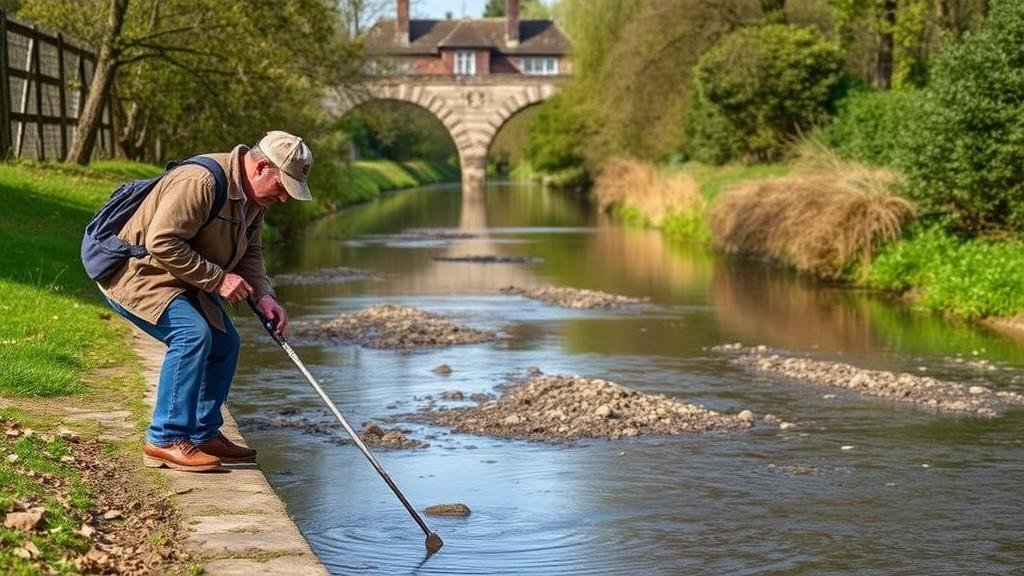Metal Detecting for Relics Along Historic Canals and Aqueducts
Metal Detecting for Relics Along Historic Canals and Aqueducts
Metal detecting is an engaging hobby that combines history, archaeology, and adventure. It offers enthusiasts a chance to unearth relics of the past, particularly along historic canals and aqueducts, structures that have played pivotal roles in trade, transportation, and agriculture. This article delves into the nuances of metal detecting in these historic locations, discussing techniques, relevant tools, examples of successful finds, and the importance of preserving historical integrity.
Understanding Canals and Aqueducts
Canals and aqueducts have been essential to human civilization for centuries. Canals, often man-made, were constructed to enable the transportation of goods and people, while aqueducts were designed to convey water from sources to cities and agricultural areas. The historic significance of these structures makes them prime sites for metal detecting.
For example, the Erie Canal in New York revolutionized trade in the 19th century, allowing goods to flow more freely between the Atlantic Ocean and the Great Lakes. Similarly, the Roman aqueducts, which span thousands of miles across Europe, are remarkable engineering feats that still fascinate archaeologists and historians alike.
Essential Tools for Metal Detecting
A successful metal detecting experience requires appropriate tools. Essential equipment includes:
- Metal Detector: Choose a model designed for relic hunting, with features like discrimination ability to differentiate between various types of metals.
- Headphones: Noise-cancelling headphones help you focus on the detectors signals without outside disturbances.
- Digging Tools: A trowel or spade is necessary for recovering items from the ground without damaging them.
- Field Notebook: Document finds, locations, and observations to aid in historical research and future explorations.
Techniques for Successful Relic Hunting
Metal detecting along historic canals and aqueducts involves specific techniques to increase the probability of finding relics. Here are some effective strategies:
- Research Historical Maps: Understanding the original paths of canals and aqueducts can guide your search in areas where relics are likely to be found.
- Focus on Access Points: Locations such as locks, loading docks, and water sources serve as focal points for human activity and are often rich in historical artifacts.
- Surface Scanning: Before digging, perform a surface scan. Small items may be visible and can provide clues about what lies below.
Case Studies and Notable Finds
Many successful metal detecting ventures have yielded significant historical relics. An example is the discovery of Civil War-era artifacts along the Chesapeake and Ohio Canal in Maryland. Detectors unearthed items like buttons, musket balls, and other military paraphernalia, contributing to our understanding of historical troop movements.
In another instance, metal detecting along the Roman aqueduct of Segovia in Spain revealed Roman coins that dated back to the early empire, offering insights into the economy and trade of the time.
Legal and Ethical Considerations
While metal detecting can reveal remarkable finds, it is crucial to adhere to legal and ethical standards. In many countries, including the United States and those in Europe, specific laws govern metal detecting on public land. Detectors should always:
- Obtain Permits: Verify whether you need permissions from local authorities to detect in certain areas.
- Respect Archaeological Sites: Avoid detecting on protected sites without explicit consent.
- Report Significant Finds: Reporting discoveries to local historical societies can contribute to the collective understanding of the area’s history.
The Importance of Preservation
Preserving the integrity of historical sites is paramount. Each relic recovered provides invaluable information about past societies and lifestyles. But, treasure hunters must be careful to ensure that they do not inadvertently damage historic structures or leave behind harmful disturbances.
For example, maintaining detailed records of artifact finds can aid in contextualizing the items. Artifacts that are removed without proper documentation can lose their historical significance.
Actionable Takeaways
For those interested in embarking on metal detecting along historic canals and aqueducts, consider the following actionable tips:
- Invest in quality detecting equipment suited for relic hunting.
- Conduct thorough research on historical sites before detection.
- Familiarize yourself with local laws regarding metal detecting.
- Document your findings and share them with historical organizations.
Metal detecting along historic canals and aqueducts can provide thrilling insights into our past while fostering a deeper appreciation for historical preservation. By employing the right techniques and adhering to ethical standards, enthusiasts can contribute meaningfully to the world of archaeology and history.



